Removal Procedure
Tools Required
| • | J 7872 Magnetic
Base Indicator Set |
- Remove the manual transaxle assembly from the vehicle. Refer to
Transmission Replacement
in Manual
Transmission.
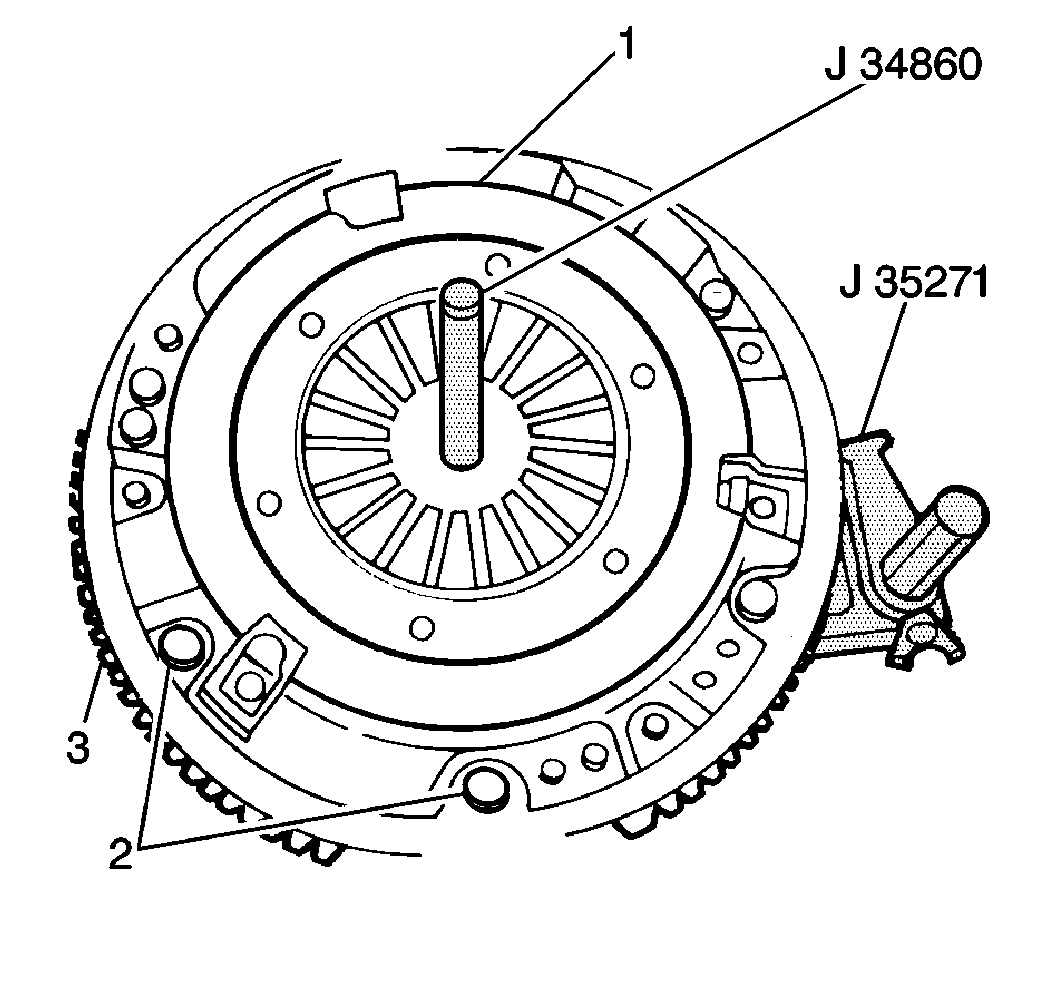
- Install J 35271
in order to hold the flywheel (3)
stationary.
- Install J 34860
in order to support the clutch disc during removal.
- Slowly and evenly loosen the 6 cover bolts (2) from
the clutch pressure plate until the tension of the spring is completely released.
- Remove the 6 cover bolts, and remove the pressure plate from the
flywheel.
Important: Do not use solvents, mineral spirits, or other cleaning agents that
contain alcohol on the clutch disc (1). Solvents on the clutch disc
causes slipping and premature clutch wear.
- Remove the clutch disc and J 34860
from the flywheel.
- Remove the J 35271
from the flywheel.
- Use J 7872
in order to measure the flywheel.
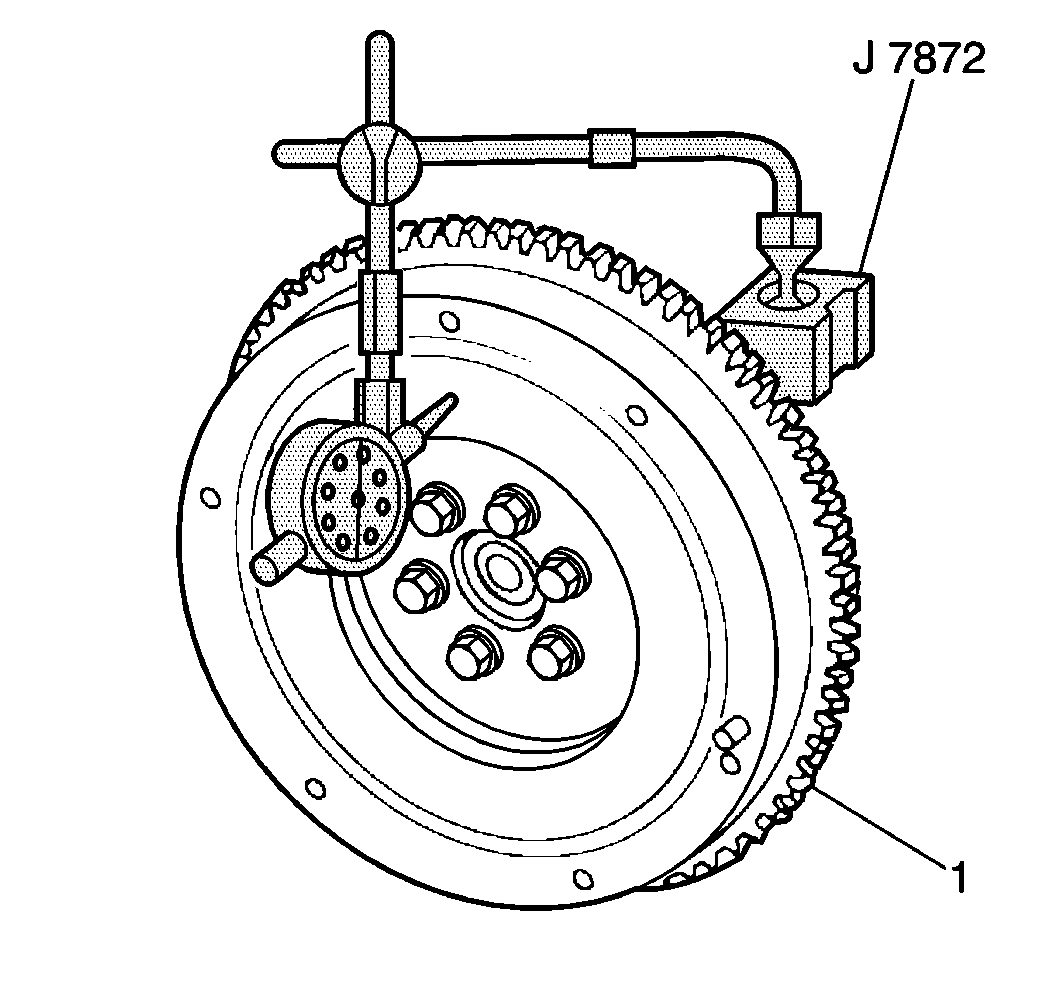
Important: Before removal, index the flywheel (1) in relation to the crankshaft
with a china marker in order to verify correct installation. Engine imbalance
and/or transaxle imbalance results if the flywheel is not installed in the
position from which the flywheel was removed.
- Use J 7872
a flywheel wrench
in order to slowly turn the flywheel (1). Use the in order to measure
the flywheel for runout. Resurface or replace the flywheel if the flywheel
runout exceeds 0.1 mm (0.004 in).
- If the flywheel needs resurfacing, remove the flywheel bolts and
the flywheel from the crankshaft. Observe the flywheel position on
the crankshaft.
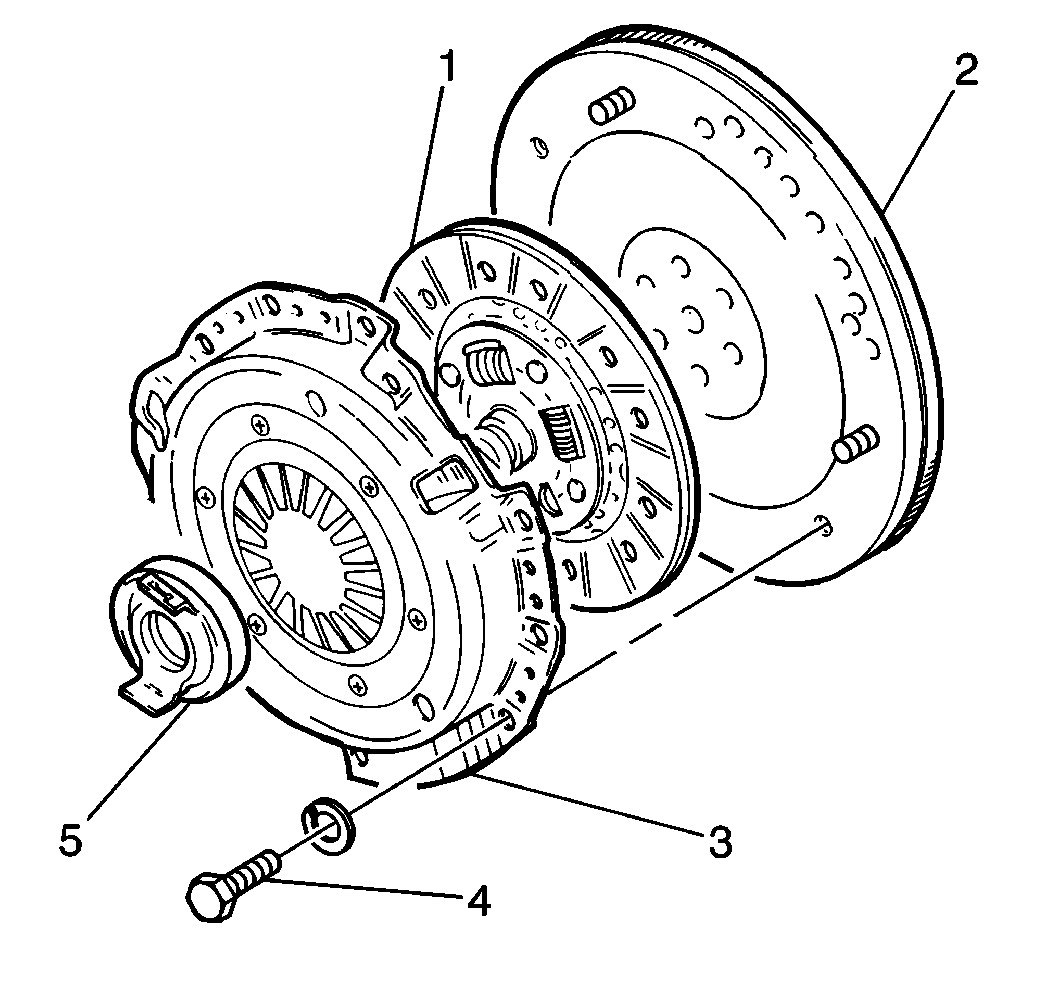
- Clean the flywheel (2)
and the mating surfaces between the clutch pressure plate and the clutch disc (1,3).
- Clean the clutch disc (1) using a clean dry cloth.
- Inspect the flywheel (2) and the clutch pressure plate (3) for
the following conditions:
| • | Pressure plate spring levers that are bent or broken |
| • | A weak diaphragm spring or a damaged diaphragm spring |
Notice: If any of the following conditions exist, do not attempt to disassemble
or repair the clutch pressure plate. If the flywheel or the clutch pressure
plate appears excessively worn, replace the flywheel and/or clutch pressure
plate as necessary.
- Inspect the clutch pilot bearing for smooth rotation. Replace the clutch
pilot bearing if the clutch pilot bearing does not spin freely. Refer to
Clutch Pilot Bearing Replacement
.
- Inspect the clutch disc for the following conditions:
| • | Damaged torsional springs or weak torsional springs |
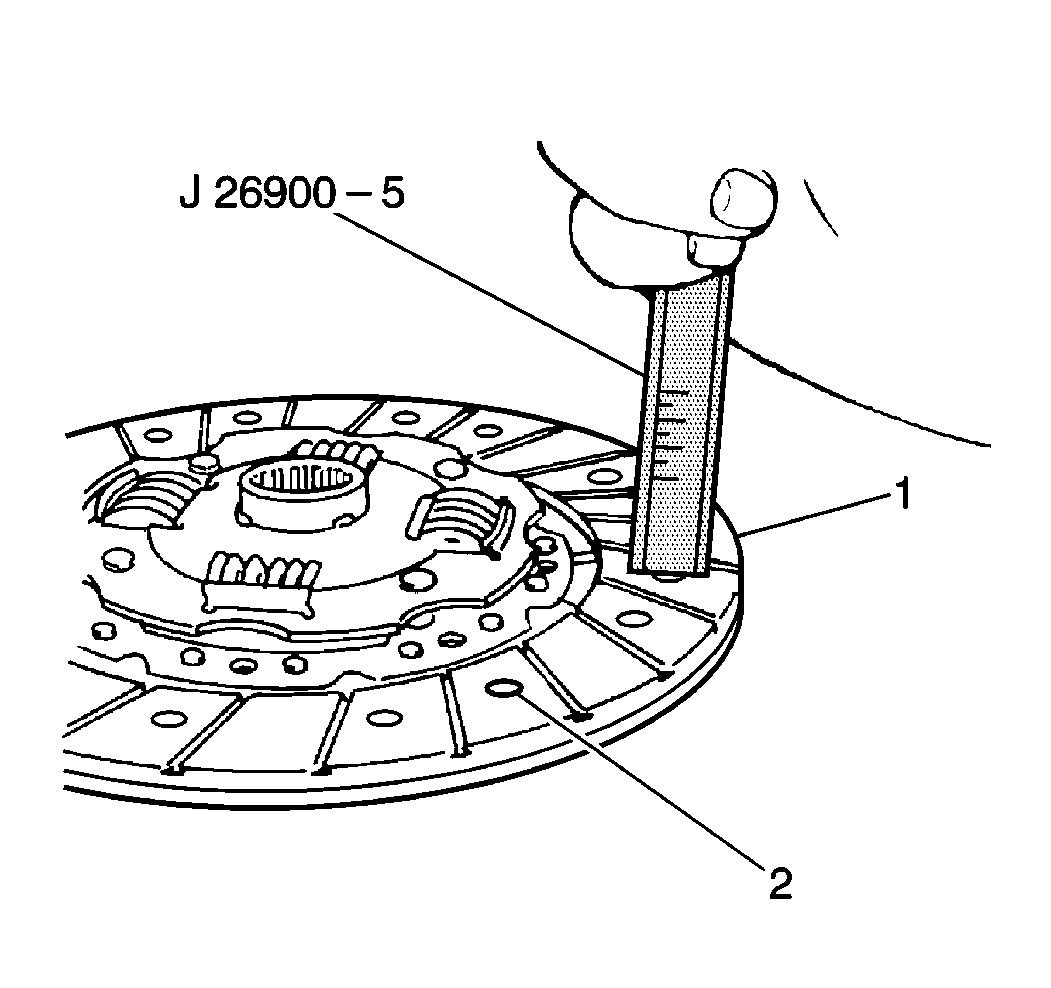
- Use J 26900-5
in order to measure the clutch disc
(1) wear. Measure the depth of each rivet head depression (2).
Measurement
| • | 1.2 mm (0.05 in) for the 1.0-liter engine |
| • | 1.5 mm (0.06 in) for the 1.3-liter engine |
- Replace the clutch disc if the clutch rivet depth is less
than 0.5 mm (0.02 in).
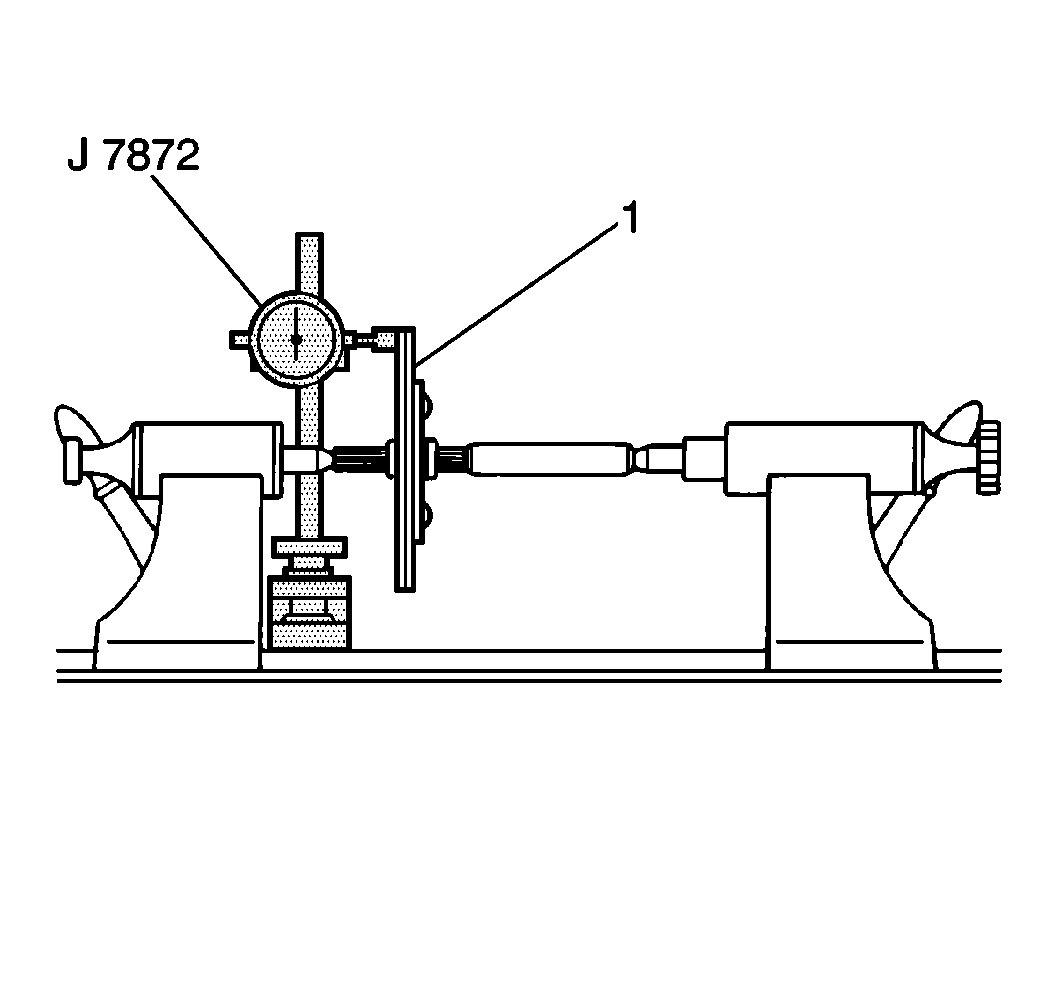
- Use J 7872
in order to measure the clutch disc (1)
for runout. Place the clutch disc between the 2 horizontal arbors. Slowly
turn the clutch disc while measuring runout. Replace the clutch disc if the
clutch disc runout exceeds 0.8 mm (0.031 in).
Installation Procedure
Tools Required

Notice: Use the correct fastener in the correct location. Replacement fasteners
must be the correct part number for that application. Fasteners requiring
replacement or fasteners requiring the use of thread locking compound or sealant
are identified in the service procedure. Do not use paints, lubricants, or
corrosion inhibitors on fasteners or fastener joint surfaces unless specified.
These coatings affect fastener torque and joint clamping force and may damage
the fastener. Use the correct tightening sequence and specifications when
installing fasteners in order to avoid damage to parts and systems.
- If you removed the
flywheel, install the flywheel (1) to the crankshaft in the same position
(3) from which the flywheel was removed. Secure the flywheel with the
six flywheel bolts (2).
Tighten
| • | Tighten the flywheel bolts for the 1.0-liter engine to 61 N·m
(45 lb ft). |
| • | Tighten the flywheel bolts for the 1.3-liter engine to 78 N·m
(57 lb ft). |
- Use J 35271
in order to hold the flywheel stationary.
- Install the clutch disc to the flywheel with the torsion springs
offset toward the transaxle. Use the J 34860
in order to center the clutch disc, and hold the
clutch disc in place on the flywheel.
- Install the clutch pressure plate to the flywheel. Install the
6 cover bolts in order to retain the flywheel.
Tighten
Tighten the cover bolts to 23 N·m (17 lb ft).
- Remove the J 35271
and the J 34860
.
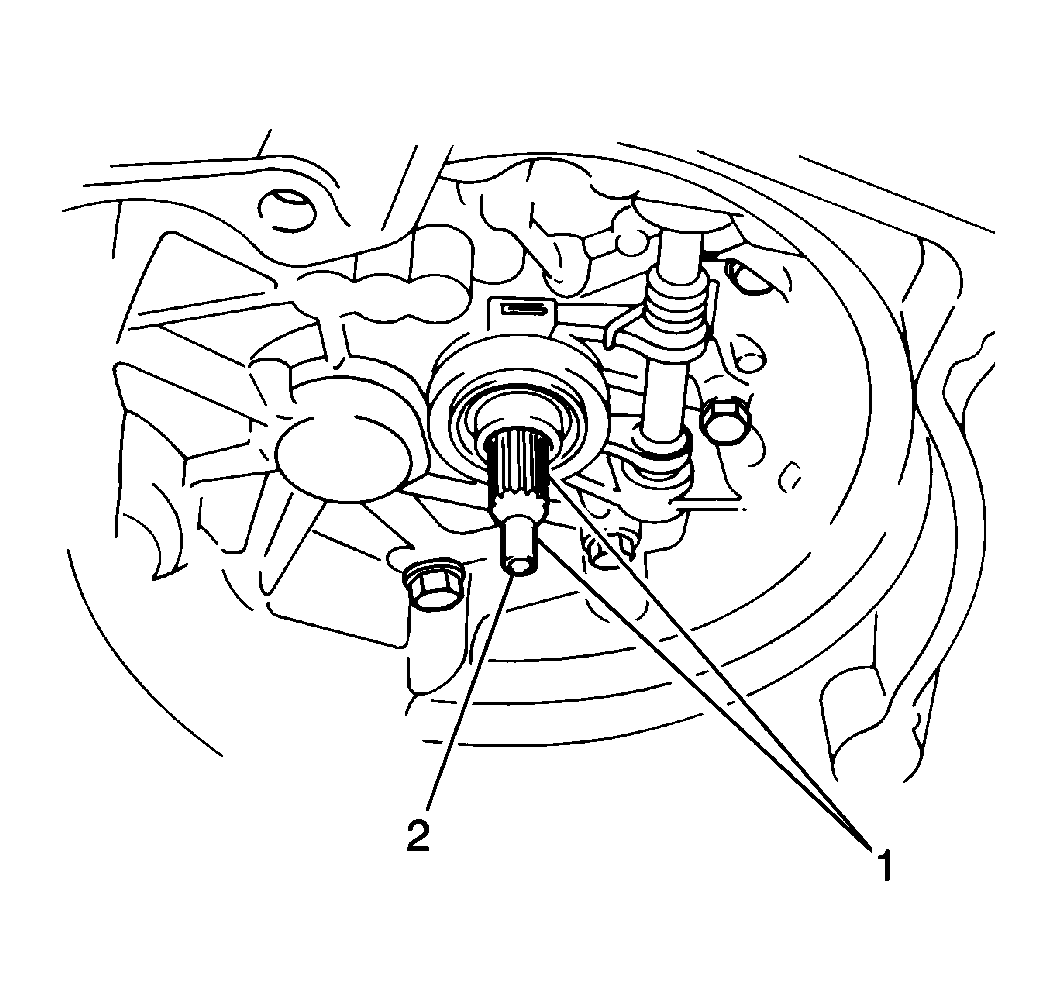
- Lubricate the transaxle
input shaft splines (2) and the clutch release bearing with a thin
coat of GM P/N 1051344 or of an equivalent lubricant.
- Lubricate the clutch pilot bearing (1) with a thin coat of the
GM P/N 1051344 or of an equivalent wheel-bearing lubricant.
- Install the manual transaxle assembly into the vehicle. Refer
to
Transmission Replacement
in
Manual Transmission.
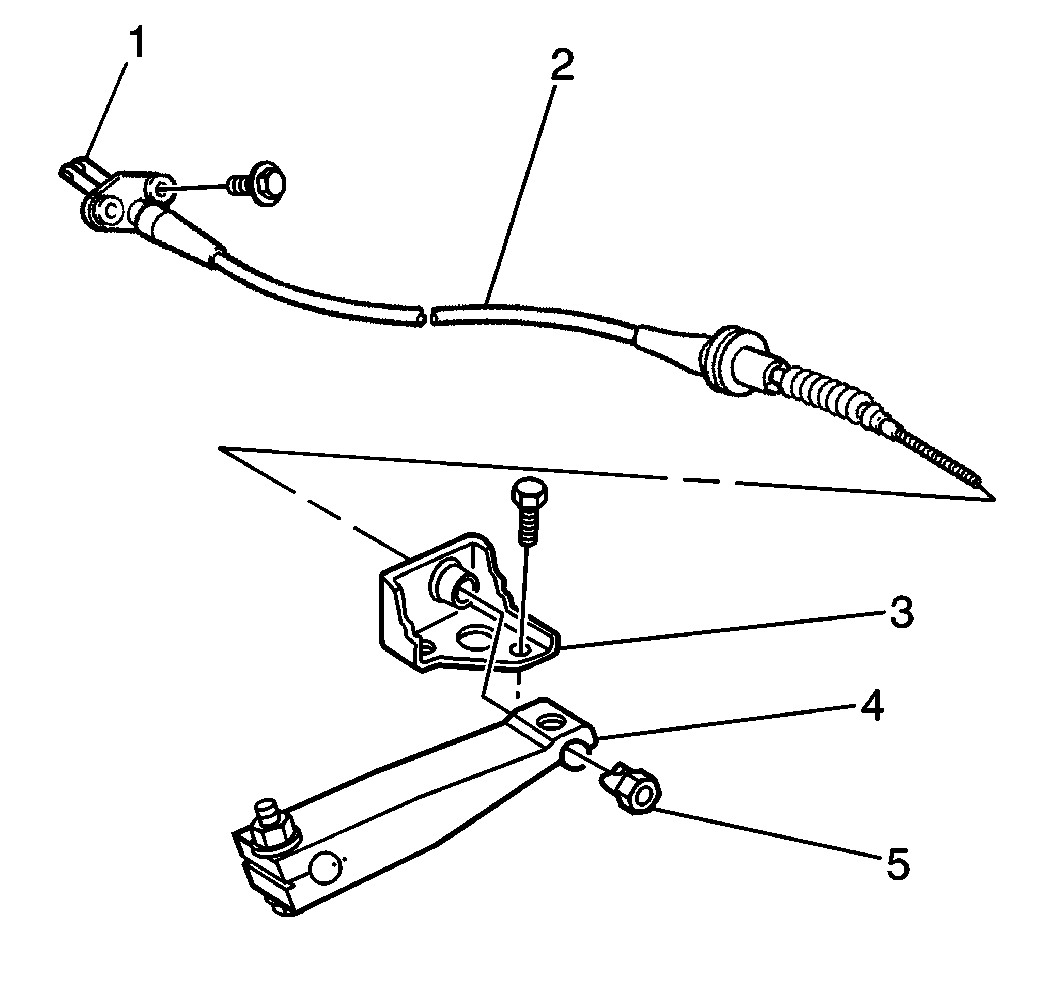
- Adjust the clutch pedal
free travel. Tighten or loosen the clutch cable adjustment nut (5) until the
clutch pedal free travel is within specifications. Refer to
Clutch Pedal Free Travel Adjustment
.








